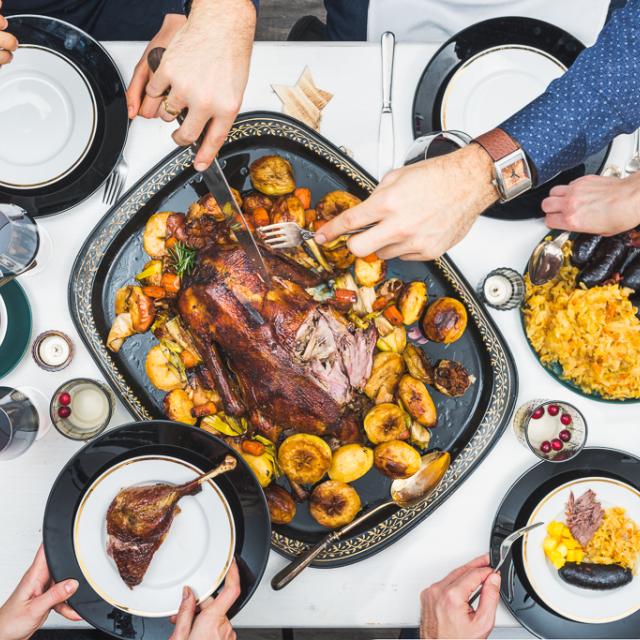Winter food

The main colours of the snowy and cold winter in the Estonian kitchen are the opposites – white and black. Salt and sugar, just like ice and snow, have helped to conserve food stocks over the winter. Black rye bread makes the meals more filling. Even beer takes the colour of thick porter in winter. Christmas meals have always included dark blood sausages and blood dumplings, gingerbread is served for treats. Porridges and stews, hotpots and oven roasts are also good for filling the stomach when it’s cold. Pork roast and sauerkraut are the winter season favourites. Pumpkin and lingonberry salad, conserves and berries from the freezer are used to add cheerful colours to dishes. Under ice fishing adds fresh bass, roach and ruff to the menu. The flavours of winter are strong and filling.
In winter, food must provide enough “fuel” for the body and help to keep up the spirit during the darkest time of the year. That’s why fatty and sweet dishes are not spurned. Black bread with salted, smoked or seasoned white pork fat fits the cold season well. Estonians have always loved fatty pork and pork fat. They are still held in high esteem today. Fatty fish, such as salmon or herring, are also popular.
Winter is the time for enjoying the fruits of the work done in the seasons before, the harvest and foodstuffs stocked up in the garner and pantry. Only a small share of the local raw material remains fresh until spring, in most cases, it must be processed – salted, smoked, marinated, acidified or frozen. The taste and texture of the food get a peculiar “wintery” stamp in this manner. Freezing food has been known in Estonia for ages. For example, cabbage used to be first blanched and then left outside to freeze to preserve it over the winter. Today, it is more and more common to deep freeze foodstuff as it is easier and more convenient and helps maintain the natural characteristics of the food better.
In the winter months, meat dishes, blood dishes and jellied meat predominate on the dinner table. Hot flavours are added with horseradish, mustard, vinegar or more modern ketchups and sauces. In the olden days, no important holidays or festive occasions went by without beer being brewed at home.
The long winter when the house needs constant heating has been especially well-suited for making various casseroles and baked goods. Peasants used to eat a lot of dishes made of barley groats and barley flower, grits was served for all holidays and family celebrations. More recently, buns and pies baked of white wheat flour have been preferred, these are especially good to have warm when it’s cold outside. Making home-made rye bread has become popular again today. For centuries, spicy gingerbread has been baked for holidays – this arrived on the tables of the ordinary people through town and manor kitchens. Eating buns with fancy caps of whipped cream for Shrove Tuesday is also a long-standing tradition.